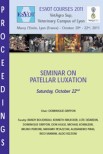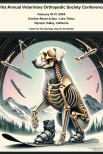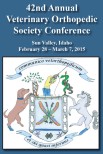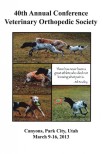OBJECTIVE:
To evaluate medium and long term effects of sliding humeral osteotomy (SHO) in dogs.
STUDY DESIGN:
Prospective study.
ANIMALS:
Dogs (n = 32).
METHODS:
Data (2008-2010) collected from medical records included force plate data, radiographs, and a 15 question owner survey of dog soundness before SHO and at final evaluation.
RESULTS:
All dogs except 2 exceeded their preoperative ground reaction forces in the operated limb and there was a statistically significant upward trend in ground reaction forces compared with the contralateral limb. Radiographic osteophytosis using the IEWG protocol had not progressed on the operated limb except in 1 dog. Most (90%) owners felt that lameness had diminished at the final evaluation compared with preoperative lameness. Ten dogs had postoperative complications; 6 were considered major, requiring further surgery.
CONCLUSIONS:
SHO can be performed successfully in dogs to limit the radiographic progression of osteophytosis and increase use of the affected limb; however, the complication rate is high and further implant or technique modifications are needed to improve results.









